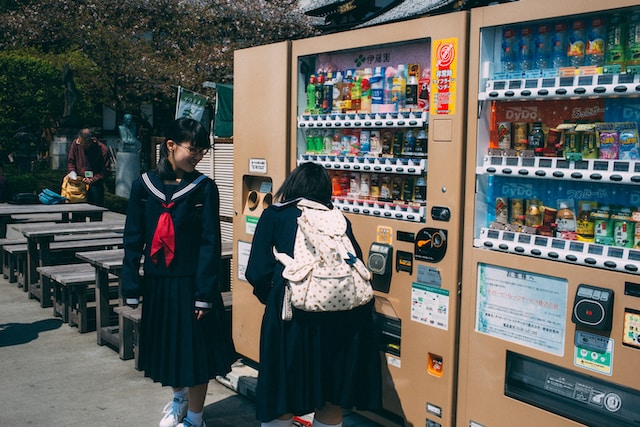
Learning Japanese may seem intimidating at first, especially when it comes to mastering the grammar. But with a little bit of practice and patience, even beginners can start building a solid foundation in basic Japanese grammar.
Parts of Speech in Basic Japanese Grammar
Understanding the different parts of speech is essential in any language, including basic Japanese grammar. In this section, we will delve into the various parts of speech in Japanese grammar, dissecting their roles and functions in sentence construction. By familiarizing yourself with these fundamental building blocks, you will be able to express yourself more accurately and effectively in Japanese.
Nouns (名詞):
Nouns in Japanese are used to name people, places, things, and ideas. They serve as the foundation for constructing sentences and can be categorized into different subtypes:
Common Nouns (普通名詞): These are general nouns used to describe everyday objects or concepts, such as “kasa” (umbrella), “kazoku” (family), or “hon” (book).
Proper Nouns (固有名詞): These nouns refer to specific names of people, places, and organizations, such as “Tokyo” or “Yamada-san.”
Pronouns (代名詞): Pronouns are used to replace nouns in a sentence. Common pronouns in Japanese include “watashi” (I), “anata” (you), and “kare” (he/him).
Adjectives (形容詞):
Adjectives in the Japanese language are used to describe or modify nouns. They take on different forms to indicate tense or negation. Here are some key points regarding adjectives:
- I-adjectives: These adjectives end in -i and directly modify nouns, such as “kirei” (beautiful), “atsui” (hot), or “yasui” (cheap).
- Na-adjectives: These adjectives require the particle “na” to connect to nouns, such as “genki na hito” (an energetic person) or “oishii na tabemono” (a delicious food).

- Tense and Negation: Adjectives can be conjugated in the same way as verbs to indicate tense and negation. For example, “kirei desu” (it is beautiful) can become “kirei dewa nai” (it is not beautiful).
Verbs (動詞):
Verbs are action words that express actions, states, or occurrences. They play a crucial role in Japanese sentences and are categorized into three main groups:
- Ichidan Verbs: Also known as the “ru-verbs,” these verbs end in -ru or -iru. For example, “taberu” (to eat) or “miru” (to see).
- Godan Verbs: These verbs undergo vowel changes when conjugated and end in different sounds, such as -u, -ku, -gu, -su, -tsu, -nu, -bu, or -mu. Examples include “kaku” (to write) or “hanasu” (to speak).
- Irregular Verbs: These verbs do not follow the standard conjugation patterns seen in ichidan and godan verbs. Some common irregular verbs include “suru” (to do) and “kuru” (to come).
Particles (助詞):
Particles hold a significant role in Japanese sentence structure, as they indicate the relationship between words and provide additional context. Here are a few essential particles commonly used:
- は (wa): Marks the topic of the sentence, such as in “Watashi wa Nihonjin desu” (I am Japanese).
- を (o): Marks the direct object of a sentence, indicating the receiver of the action, as seen in “Ring
Word Order

In Japanese, the word order is typically Subject-Object-Verb (SOV). For instance, “I (subject) sushi (object) eat (verb)” in English becomes “私は(Subject)寿司を(Object)食べます(Verb)” in Japanese.
Just remember “I sushi eat” and not “I eat sushi”.
Particles
Particles in Japanese are small words that add meaning to a sentence. They show the grammatical relationships between words. For example, “wa” indicates the topic of sentence, “o” indicates the object of the sentence, and “ni” indicates direction or location.
We don’t always use particles in English. “I like this hat” doesn’t really have a particle. But in the sentence “I’m going to the mall”, the word “to” is like a particle, because it indicates the part of the sentence showing where we are going. So we do sometimes have particles. In Japanese, they’re almost always required.
Tenses
Unlike English, Japanese doesn’t have a present tense, past tense, or future tense. Instead, they have something called the “tenseless” system. To indicate time, Japanese uses particles like “te” and “iru”. “Te” represents an action in progress, and “iru” represents a state of being.
Negation
To make a negative sentence in Japanese, simply add “nai” at the end of the verb. For example, “taberu” become “tabenai” to mean “not eat”.
This can also make listening a little hard, because sometimes the important part of a sentence comes at the end. “I eat sushi” and “I won’t eat sushi” are hard because they’re very similar and the negation comes towards the end.
These are just a few basic rules of Japanese grammar, but they will give you a good foundation to build on. Learning the Japanese language can be challenging, but it’s also incredibly rewarding. With practice and perseverance, you can master this amazing language and immerse yourself in Japanese culture.
Beginner Sentences
Here are some introductory Japanese sentences:
- こんにちは (Konnichiwa) – Hello
- ありがとう (Arigatou) – Thank you
- ごめんなさい (Gomen nasai) – I’m sorry
- おはようございます (Ohayou gozaimasu) – Good morning
- こんばんは (Konbanwa) – Good evening
- おやすみなさい (Oyasumi nasai) – Good night
- 私は___です (Watashi wa ___ desu) – My name is ___
- はい (Hai) – Yes
- いいえ (Iie) – No
- どうぞ (Douzo) – Please/Here you go

As you continue to learn Japanese grammar, it’s important to practice speaking and listening as much as possible. Try to find a language exchange partner, watch Japanese movies or anime, and listen to Japanese music to immerse yourself in the language.
Don’t be afraid to make mistakes and keep studying consistently. With dedication and perseverance, you can become fluent in Japanese and open up a whole new world of culture and language.
Counters and Quantifiers (助数詞と量詞)
Counters and quantifiers play a crucial role in Japanese grammar as they are used to count objects, express quantities, or indicate measurements. Here are some important points to remember:
Counters are used in Japanese to specify the number or amount of a specific item. There are various counters for different objects or situations. For example, when counting flat objects, you would use the counter “mai” (枚) as in “kirei na shatsu o san-mai” (three beautiful shirts). When counting small animals, the counter “hiki” (匹) is used, such as “neko wa go-hiki imasu” (there are five cats).
Quantifiers are used to express general quantities or measurements. They are often paired with counters to provide more specific information. For example, the quantifier “ikutsu” (いくつ) can be used to ask “how many?” as in “Nihon no toshi ni wa ikutsu no toshi ga arimasu ka?” (How many years are there in Japanese age?).
There are numerous counters and quantifiers in Japanese, each serving a specific purpose. For example, when counting small animals, the counter “hiki” (匹) is used, such as “neko wa go-hiki imasu” (there are five cats). When referring to flat objects like sheets of paper, you would use the counter “mai” (枚) as in “kirei na shatsu o san-mai” (three beautiful shirts).
Conjunctions (接続詞):
Conjunctions are words or phrases that connect words, phrases, or clauses in a sentence. They help to express relationships between different parts of a sentence and ensure smooth and coherent communication. Here are a few common conjunctions in Japanese:
そして (soshite): Meaning ‘and,’ “soshite” is used to connect two or more similar ideas or actions. For example, “Watashi wa tabete, soshite benkyou shimasu” (I eat, and then I study).
でも (demo): This conjunction translates to ‘but’ or ‘however’ and is used to introduce a contrast or exception. For example, “Ame ga futteimasu, demo dekakeru node ikemasen” (It’s raining, but I can’t leave).
だから (dakara): Meaning ‘therefore’ or ‘so,’ “dakara” is used to indicate cause and effect or a logical consequence. For example, “Itsumo benkyou shiteimasu, dakara gakusei desu” (I always study, so I am a student).
または (matawa): Translating to ‘or,’ “matawa” is used to present a choice or alternative. For example, “Tabemono wa sushi matawa sashimi o erande kudasai” (Please choose between sushi or sashimi for the food).

Understanding and correctly using these conjunctions in your Japanese sentences will help you structure your ideas in a clear and cohesive manner.
Remembering these structural elements will not only help you construct grammatically correct sentences but also enhance your communication skills in Japanese.
Mastering the basics of Japanese grammar sets a strong foundation for further language learning. By understanding the word order, parts of speech, particles, and sentence structure, you can begin to construct more complex sentences and express yourself accurately in Japanese. Remember to practice speaking and listening as much as possible to reinforce your understanding. With time and dedication, you can delve deeper into the intricacies of Japanese grammar and unlock the beauty of the language. Happy learning!

